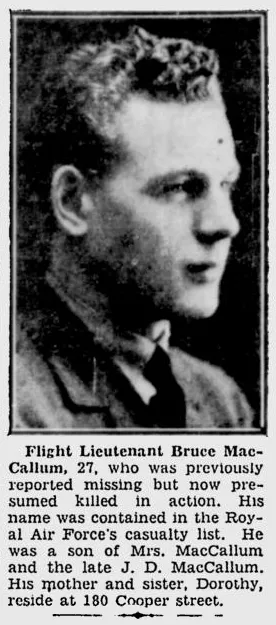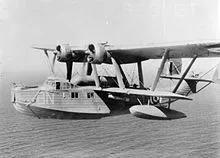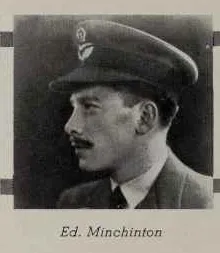MacCallum, Bruce
Killed in Action 1940-09-14


Birth Date: 1913
Born:
Son of James Douglas and Beatrice MacCallum, of Ottawa, Ontario, Canada; husband of Maud MacCallum.
Home: Ottawa, Ontario
Enlistment:
Enlistment Date: Unknown
Service
RAF
Unit
202 Sqn- Squadron
Base
Rank
Flight Lieutenant
Position
Flight Lieutenant
Service Numbers
37723
Home
 Ottawa, Ontario
Ottawa, Ontario
First Burial
 Malta War Memorial, Malta
Malta War Memorial, Malta
202 Squadron (Semper Vigilate). SARO London II aircraft K 9682 failed to return from photo reconnaissance operations
Flight Lieutenant B MacCallum (RAF)(Can) was killed. Please see Minchinton, EC for additional detail
Saunders-Roe London

The Saunders Roe A.27 London was a British military biplane flying boat built by the Saunders Roe company. Only 31 were built, entering service with the Royal Air Force in 1936. Although due for replacement by the outbreak of World War II, they saw some active service pending the introduction of the ultimately unsuccessful Lerwick.
The A.27 London was designed in response to the Air Ministry Specification R.24/31 issued for a "General Purpose Open Sea Patrol Flying Boat" and was based on the Saro A.7 Severn. The London and its contemporary, the Supermarine Stranraer, were the last multi-engine, biplane flying-boats to see service with the RAF. The design utilized an all-metal corrugated hull and fabric-covered wing and tail surfaces, with two Bristol Pegasus II radial engines, mounted on the upper wing to keep them clear of spray while taking off and landing.
The first prototype first flew in March 1934 and then went on to serve until 1936 with 209 and 210 Squadrons RAF at RAF Felixstowe and Gibraltar respectively.
Gradually, the Londons' duties were assumed by newer aircraft such as the Lockheed Hudson, while squadrons flying Atlantic and Mediterranean patrols were re-equipped with Short Sunderlands. Some Londons were transferred to the Royal Canadian Air Force. All were withdrawn from front-line duties by the middle of 1941.Wikipedia
 Canadian Virtual War Memorial
Canadian Virtual War Memorial
 Wikipedia London Flying Boat
Wikipedia London Flying Boat